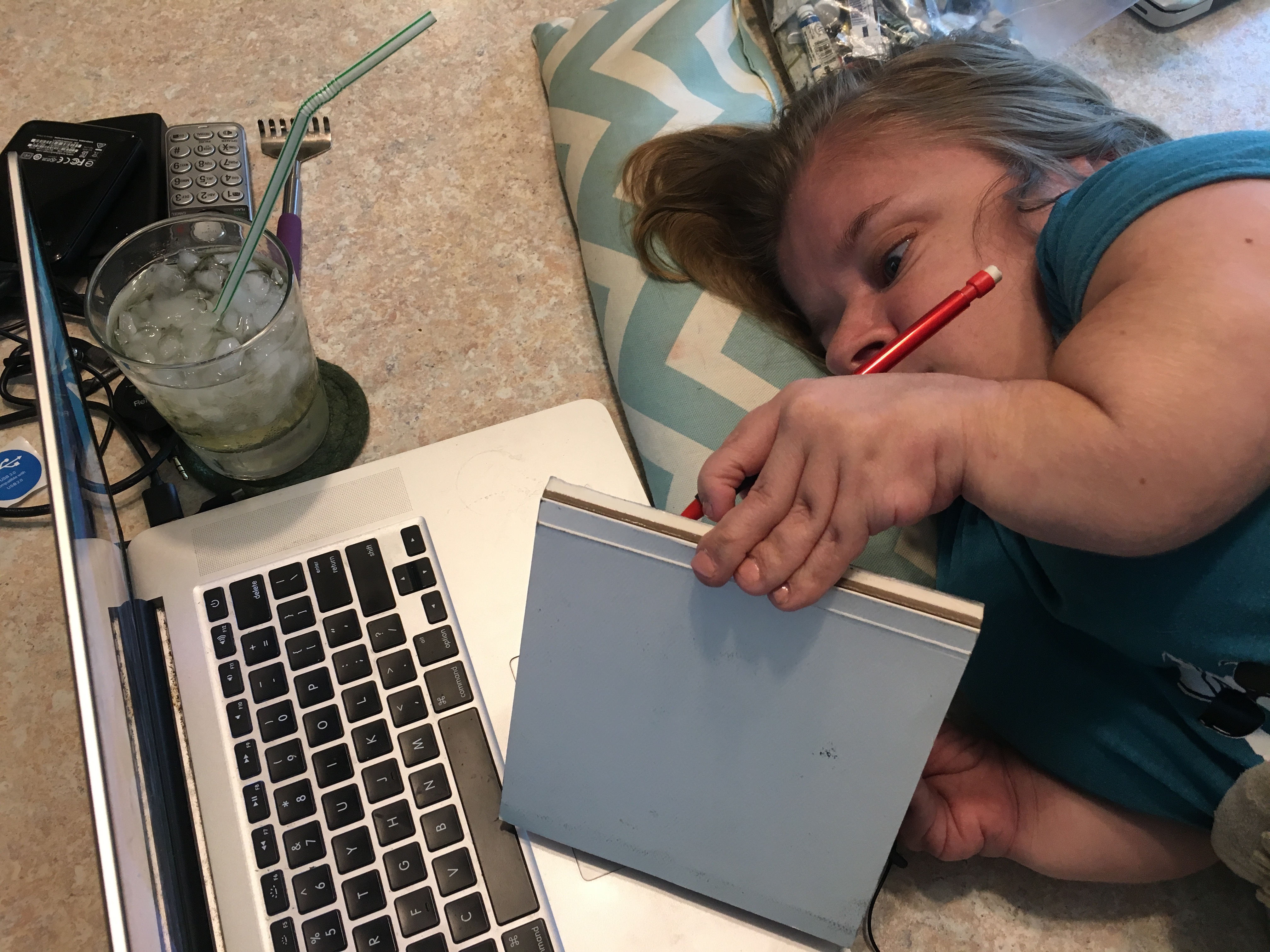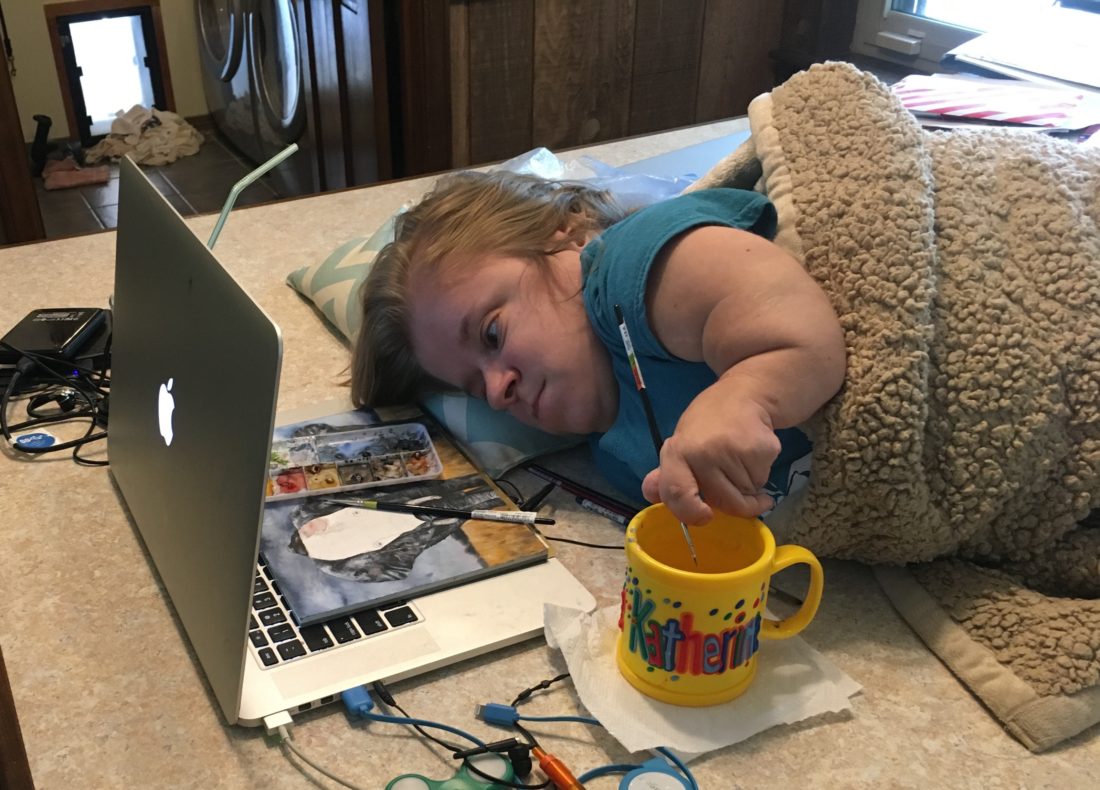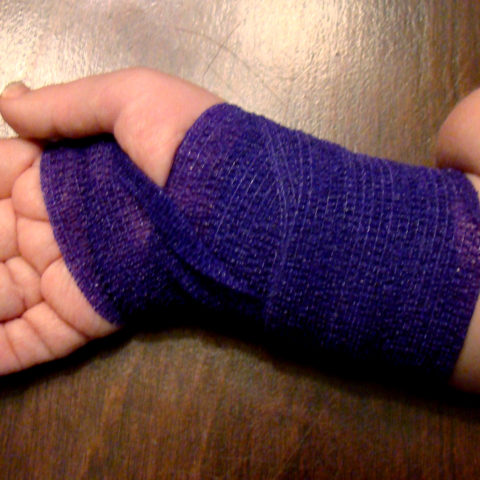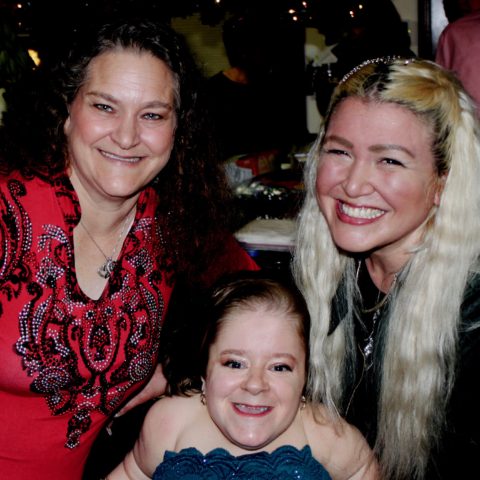How I Paint: Perspective, Habit, & Practice
This may surprise you, but I paint lying on my right side, stabilizing my left hand on my body. This is actually the position in which I do most daily activities. Because it’s hard on my back and my joints to sit up for a long time,even in my wheelchair, I’ve adapted to doing most things from a more comfortable lying down position. When you have constant pain, it’s hard to get anything done, let alone something that requires a good deal of concentration. I have less pain lying down, so it’s just easier for me to work like that.

The hardest part about painting lying down is getting the perspective and proportions right in my preliminary drawings. Things look very different lying on your side. It took me a long time, and an incredible private instructor, to learn how to compensate for my unique view. When it became obvious that art was going to be something that I pursued as a career and not just a hobby (read more about how I got started here), my mother hired an extremely talented artist named Robin Pellegrin to teach me private classes at a college level even though I was barely in high school. I grew to love Robin, but boy was she tough. I can remember one day where all she had me do was draw perfect circles by hand (no tracing and no compass) for two hours straight. It was one of the most frustrating and boring days of my adolescence, but by the end of it, I could (and still can) draw a perfect circle of varying sizes freehand. That may sound simple, but trust me, it’s not. Try it. I dare ya.

The coolest thing about Robin was that she understood that in order to teach me effectively, she needed to see my specific perspective and help me figure out what degree of compensation I needed to have in order to draw from life accurately. She would set up a still life, then literally lay on the floor on her side with me, and show me how to skew my drawings so that they came out correct. In other words, my drawing would look crooked to me lying down as I was doing it, but once we sat it up and looked at it from a normal point of view, it was accurate. After a lot of practice, this compensation became automatic as I drew, and my skills got better and better. Teaching me how to compensate for my odd position was an invaluable lesson for me to learn. Although Robin is not the sole reason for my need to make art and my creative drive, she IS the reason I can draw like I can today. She is also the reason for my love of Fleetwood Mac (coincidentally). Unfortunately, Robin passed away several years ago, and there’s not a day that goes by that I wish I could ask her advice on a painting or talk to her about my current work. She was deeply involved in the art community, and I valued her opinion more than she ever knew.
Robin also taught me that painting is an exercise in problem solving. Every artist has a system, and she helped me discover mine. Although it wasn’t until after I stopped private lessons with her, I found that watercolor is by far my favorite medium. I absolutely hate oils, and acrylic is not one I ever really got into. For me, watercolor is the most forgiving medium (although I’m sure there are about 15 artists reading this right now saying I’m bonkers), and I just connect with it. Although I like to mix it up sometimes, watercolor is what works for me.

And of course I have my personal assistant, Paisley.
I’m extremely habitual about where I put my paints, and my water, and my drink (because, you know, I get thirsty) as well. I have rinsed my brush in my drink more times than I can count, and if I don’t put my stuff exactly the same way every time, I’m bound to do just that, knock my water over, or something else catastrophic. I get so involved in my painting that I don’t pay attention to anything else around me. I think every artist can probably relate to that. It also helps me to have music or TV on in the background to give my brain a little constant distraction. If I don’t have something that I enjoy listening to on while I paint, I tend to get frustrated quickly and quit way too soon. I generally try to block out a minimum of two hours to paint at a time. It takes a little while to get into the groove, and I like to have a chunk of time to work so that I feel like I actually accomplished something by the time I stop. However, if I paint for too long, my body starts to revolt. Usually five hours is about my top end, both physically and mentally.
Like everything else I do, I’ve had to adapt the activity of painting to what physically works for me. I’m extremely lucky that I had Robin as a mentor to help me learn how to do just that. She always said that a good painting starts out with a great drawing, and without her help, I’m not sure how capable I’d be of producing a great drawing. Her problem solving skills put well on my way to the path I’m on today, and for that I am incredibly grateful.






